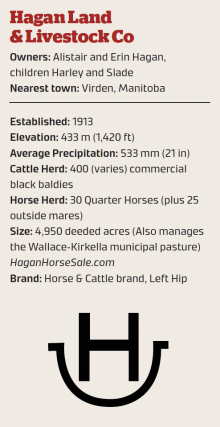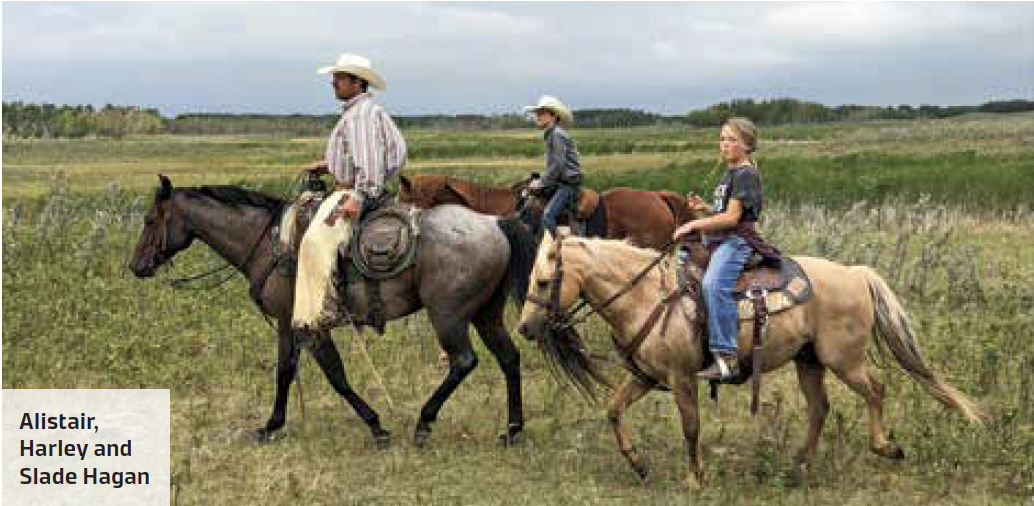By Terri Mason
This year is going to be extraordinary because there’s a drought absolutely everywhere. Personally, I think this year isn’t going to be the problem — it’s going to be next year. This year, we’ll manage. Next year, we’re going to have to reduce the herd to match the available feed. — Alistair Hagan
Here, we manage all our grass in a rotational grazing system, moving them every five days. Right now, we’ve got paddocks that only got grazed once, but it’s not growing back. The ‘hoppers and the lack of moisture… I don’t know what next year is going to look like. Our water supply is a bigger issue. You can’t rotationally graze if there’s no water.
What we do differently over here is we winter corn graze our cattle, and our corn grazing is mixed with poly crop. [Poly cropping is multiple species planted together to complement each other and benefit the soil.]

We put up silage for the calves, and what we’ve started doing now is supplement the corn grazing with a high protein ration. Every third day, we feed them one load of silage with a urea and neuro product mixed in the silage. So in the main herd of cows of 350 head, they get a load of 5,000 pounds silage with half a pound of urea-based mineral mixed in every third day. We just spread it out on a windrow right where they are corn grazing.
In corn grazing, the measurement is called ‘cow-days an acre’ (CDAA). We’ll usually get 200 cow days an acre on corn. But this year, I would be willing to bet that if we get 150 CDAA, we’ll be happy.
For us, it’s learning to match the cow to the environment.  Our cows let us know they like corn grazing; you need the type of cows that’ll do it. We do well with home-raised heifers.
Our cows let us know they like corn grazing; you need the type of cows that’ll do it. We do well with home-raised heifers.
When it comes to winter grazing, I’ve tried every theory. I now sow my corn in paddocks of 25 to 30 acres that are permanently fenced. In a normal year, we’ll put them on the first cornfield about Dec 10th. The paddocks are split — half corn and half poly crop, so they’ll graze that 25 – 30 acres until it’s cleaned up. I have five cornfields for grazing five months of the winter.
The cows start calving on May 10th. We have calving fields that we graze to the end of April, and then they never get grazed again that year, so that grass is stockpiled for the next calving.
With our mares, right now, there are 20 bulls out with a band of mares because they graze different grass types. In winter, the mares paw. We run them on a half-section of stockpiled grass, and we supplement them with hay. One or two mares will foal in March, but predominantly we have all of our colts to the end of April/start of May.

We trail our cows about 12 miles to pasture, and now we wouldn’t dare trail them past a field of corn. Last year we held up our drive until friends of ours, good guys, had finished combining for just that reason. But if it weren’t for corn, there wouldn’t be any cows in this part of the country — and that’s what works for us.”















